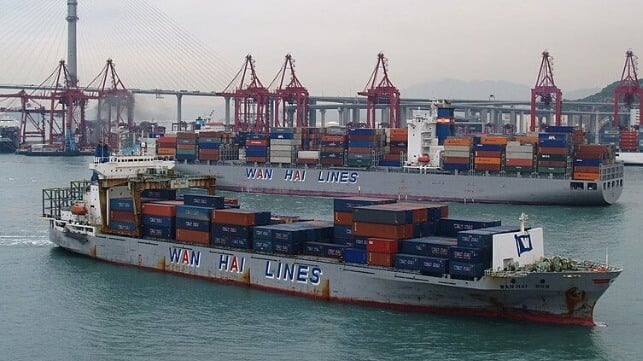As Ocean Freight Market Slows, Intra-Asian Trade Shows Signs of Growth

With the dual pressures of the ongoing war in Ukraine and the lingering effects of the COVID-19 pandemic, inflation and slowing trade volumes have become pain points for most economies globally. On the shipping front, with the market normalizing from the pandemic year’s boom, container freight rates are experiencing a momentous fall. In fact, last week saw another accelerated spot rates decline, according to Drewry World Container Index (WCI) data. The overall index declined by 3.8 percent, the largest week-on-week decline since early December.
Container shipping analysts are also observing rising numbers of empty containers piled-up in major ports in China and North America. In the first week of February, the container availability index (CAx), administered by the container-monitoring platform Container xChange, rose to 0.64 at ports in China, including Shanghai, Ningbo, Tianjin and Shenzhen. This was the 11th consecutive week that the CAx index was above 0.6, where values above 0.5 mean that more containers entered a port than left it. A CAx value of 0.5 shows that the same number of containers leave and enter a port in the same week.
“There is significant increase in empty containers along China’s coastline over the past five months. The falling rates and increased availability of containers in some regions of the world are indicative of weak demand and slower economic growth,” explained Christian Roeloffs, CEO of Container xChange.
But even as market conditions appear bleak, there is significant revision of forecasts in the Asia-Pacific region in the last couple of weeks, where a sudden re-opening of China is paving way for a faster-than-expected rebound in activity. The manufacturing and export hub of Shanghai is swiftly re-emerging from three years of Covid-19 restrictions, and market observers expect Shanghai’s full global re-integration to begin in March. Nonetheless, will Shanghai find it easy to attract foreign businesses, especially after many overseas staff faced hardships during the lockdowns?
China's neighbors stand to benefit from its success, and many economists seem to agree that China’s re-opening will have spillover effects to the rest of Asia. According to a market note by IMF last week, China’s re-opening will help improve prospects in the Asia-Pacific, making it the most dynamic of the world’s major regions and a bright spot in a slowing global economy.
“The region’s growth is set to accelerate to 4.7 percent this year from 3.8 percent in 2022. Cambodia, Indonesia, Malaysia, the Philippines, Thailand and Vietnam are all back to their robust pre-pandemic growth. Our analysis shows that, for every percentage point of higher growth in China, output in the rest of Asia rises by around 0.3 percent,” noted IMF.
This is good news to shipping lines, specifically the regional carriers that compete for intra-Asian trade. Notably, over 25 percent of containerized cargo trades within Asia.
Interestingly, as the global ocean-freight market cools, some carriers are gearing up for the massive potential offered by intra-Asian trade. Last week, Israeli carrier ZIM Integrated Shipping Services Ltd and Vietnamese Hai An Transport and Stevedoring Company announced the launch of Lotus link, a joint venture to operate domestic shipping services in Vietnam. The joint venture will serve the major ports in Vietnam (Ho Chi Minh, Danang and Haiphong) as well as provinces and hinterlands where direct access to international shipping services is limited.
